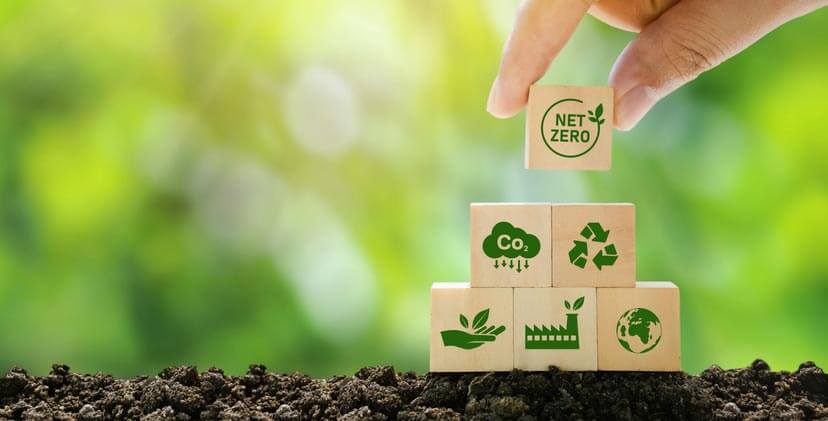Most food and beverage companies have yet to develop effective solutions to address Scope 3 greenhouse gas (GHG) emissions.
That’s likely about to change as more governments, regulatory bodies, and organizations setting climate standards for corporations change policies and rules, requiring companies to measure and create plans to reduce Scope 3 emissions.
What are Scope 3 Emissions?
As the EPA explains, “Scope 3 emissions are the result of activities from assets not owned or controlled by the reporting organization, but that the organization indirectly impacts in its value chain.”
For food and beverage companies, this means having to calculate emissions upstream (from the supply chain) and downstream (through customer use and disposal).
Why Scope 3 Emissions Matter Today
In the U.S. the SEC recently proposed new regulations on climate disclosure that align with recommendations issued by the Task Force on Climate Disclosure (TFCD). (Regulators in the European Union, Japan and other major markets are also developing similar policy guidance.)
Under the SEC proposal, first large companies and eventually many publicly traded companies will be required to disclose Scope 3 emissions. This would be a significant change, since companies have no obligation to disclose current Scope 3 emissions.
Outside of government regulation, organizations such as the Science Based Target Initiative (SBTi) are changing requirements too. SBTi—which is the leading standards-setting organization for corporate climate commitments—will soon require food and beverage, agriculture, and land use companies to reduce Scope 3 emissions by 67%, if these companies wish to align with SBTi standards.
Scope 3 Challenges in the Food and Beverage Industry
The changes coming from government and standards-setting organizations will create huge ripples for food and beverage companies.
Since agriculture is one of the largest sources of GHG emissions, for many food and beverage companies, Scope 3 will likely constitute most of their emissions—an average of 89% of total emissions for those who already disclose them. As a result, food and beverage companies will have little choice but to make significant investments in their agricultural supply chains.
This presents two significant challenges for the food and beverage industry: measurement and emissions reductions.
1. Measurement
Although SBTI recently released its draft FLAG guidance, there is—as of yet—no fully agreed upon standard for measuring Scope 3 emissions. Once consensus is reached and standards are finalized, food and beverage, as well as agriculture-based companies, will need to gather reliable, accurate data from their suppliers – both direct and indirect.
Gathering this data—particularly from smallholder farmers in developing countries—could prove very difficult (and expensive) as farmers often lack the tools, knowledge, and access to incentives to collect this information.
2. Emissions Reductions
Once companies have quality data, they will then face an even bigger challenge: how to drive emissions reductions in their agricultural supply chains to meet their climate commitments?
Although the body of knowledge in climate-smart and regenerative agriculture is quickly expanding, getting farmers to adopt these practices will require considerable training and on-farm investment. This challenge grows in magnitude when dealing with smallholder farmers in developing countries.
Developing and implementing effective emissions reductions strategies will require food and beverage companies to transform their relationship with farmers and other stakeholders in their supply chains.
The Scope 3 Solution? Collaboration
The complexity and magnitude of the Scope 3 emissions challenge for the food and beverage industry means that it will be simply impossible for companies to solve this problem on their own.
It’s the quintessential ‘wicked problem.’ Solving the Scope 3 challenge will require food and beverage companies to collaborate with farmers, buyers, and processors in their value chains to measure emissions.
- It will require companies to forge pre-competitive partnerships with other industry players, sourcing from farmers in the same region to ensure consistent approaches in measurements and agricultural practices.
- It will also require cross-sector partnerships with governments, donor agencies, and NGOs to ensure that farmers have access to the resources, extension services, and expertise needed to transition to more regenerative agricultural practices that can drive on-farm emissions reductions.
As industry, governments, and investors continue to call for the disclosure of Scope 3 emissions as a critical pathway to climate change mitigation and resiliency, the time to prepare at the organizational and even sector level is now. Engaged with partners in these strategic efforts, Resonance recognizes there is a need for expediency in addressing the data, methodological, boundary, and organizational challenges that are broadly shared as part of these undertakings, yet unique to each company and organization. Working collaboratively, we believe innovative and transformative change is feasible and manageable (and even profitable!), even amid a great deal of complexity and uncertainty.



